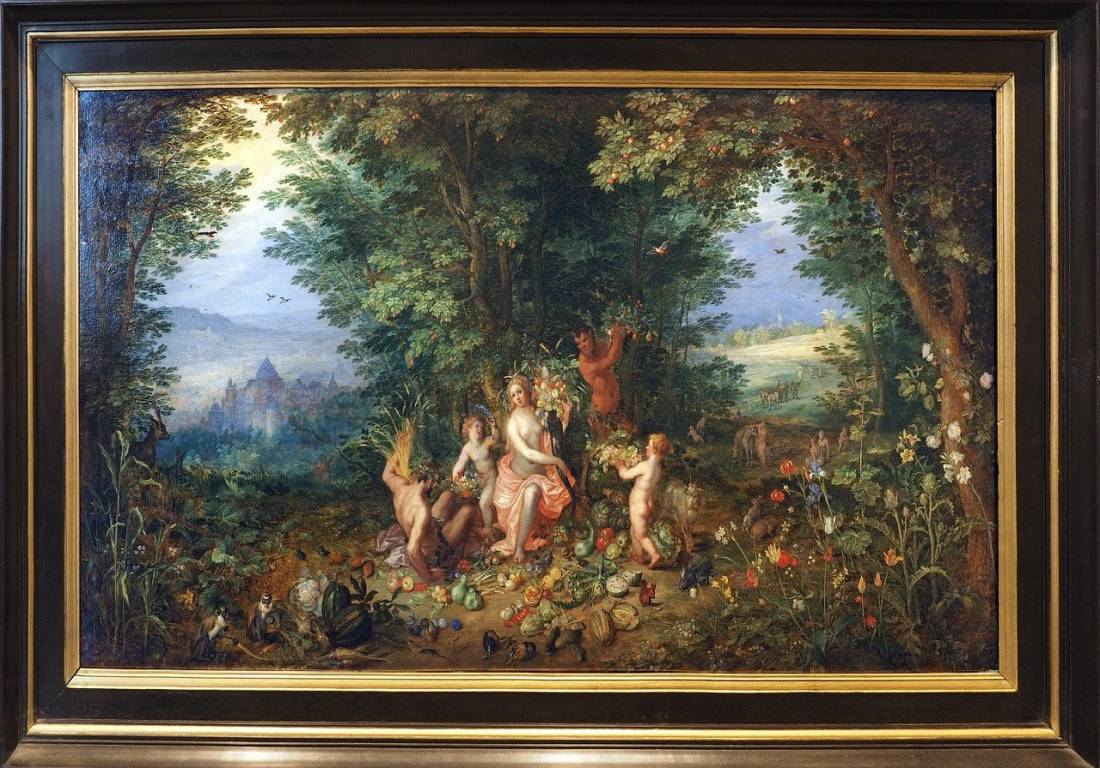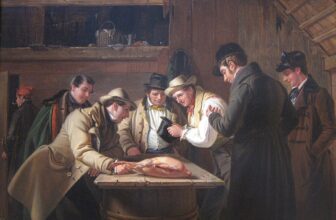
What Makes an Antique Oil Painting Valuable
Antique oil paintings have long fascinated art collectors, investors, and history lovers alike. Their ability to capture culture, technique, and personal expression across centuries makes them more than just decorative pieces, they are windows into the past. But when it comes to value, not every oil painting is considered “priceless.” Some works fetch millions at auction, while others remain affordable treasures for private collectors.
So what exactly makes an antique oil painting valuable? In this comprehensive guide, we’ll dive deep into the factors that determine value, how to identify authentic works, and what collectors should look for when building their art portfolio.
Why Collect Antique Oil Paintings?
Before breaking down value, it’s important to understand why people pursue antique oil paintings in the first place:
Cultural significance: Paintings reveal styles, beliefs, and social structures of their time.
Aesthetic appeal: Oil paints create depth, richness, and longevity unmatched by other mediums.
Investment potential: A well-chosen antique painting can appreciate in value over time.
Historical connection: Owning an artwork connects you directly with the artist’s vision and the era it was created in.
Key Factors That Determine the Value of Antique Oil Paintings
When evaluating an antique oil painting, appraisers and collectors consider several interconnected factors. Let’s explore them one by one.
1. Artist Reputation and Attribution
The most influential factor is often the name of the artist.
Renowned masters like Rembrandt, Caravaggio, or Turner can command astronomical prices.
Regional masters, artists significant within certain countries or art movements, are also highly collectible.
Attribution matters. If a painting is confidently attributed to a well-known artist, it will be valued much higher than if it is “school of” or “in the style of.”
Example: A verified Van Gogh oil painting can sell for over $100 million, while a piece in the “manner of Van Gogh” might fetch only a few thousand.
2. Provenance (Ownership History)
Provenance is the documented history of ownership. A painting with clear, traceable records is generally more valuable.
Royal or noble ownership increases prestige.
Museum exhibitions strengthen credibility.
Auction house sales provide paper trails that secure authenticity.
Paintings with mysterious or undocumented origins are often less valuable, unless they are attributed to major artists.
3. Authenticity and Documentation
An antique oil painting must be authentic. Forgeries and reproductions exist in abundance, so documentation is crucial.
Certificates of authenticity from recognized experts.
Scientific testing such as carbon dating, x-ray imaging, and pigment analysis.
Comparative study with catalogues raisonnés (comprehensive listings of an artist’s work).
Collectors pay premiums for paintings backed by strong authentication.
4. Historical Importance
Some paintings are valuable not just because of the artist, but because of their subject matter or role in history.
Works depicting major events (wars, coronations, revolutions).
Paintings associated with famous figures.
Art that represents a turning point in an artistic movement (e.g., early Impressionism).
Historical context elevates both cultural and financial value.
5. Condition and Restoration
The physical condition of an oil painting is critical.
Paintings in excellent, untouched condition are rare and fetch higher prices.
Over-cleaning or excessive restoration can diminish value.
Natural signs of aging (patina, craquelure) are acceptable, but damage like flaking or mold reduces value.
Expert restoration can save a painting, but collectors prefer minimal interference.
6. Age of the Painting
While not the sole factor, age plays a role in determining value.
Paintings older than 100 years are considered antique.
Works from significant periods (Renaissance, Baroque, Romanticism) often carry greater value.
However, a 19th-century painting by a famous artist can still be more valuable than a 16th-century work by an unknown hand.
7. Rarity and Uniqueness
Scarcity drives demand. If only a few works by an artist survive, or if the painting represents a rare subject matter, its value increases.
Lost works rediscovered after centuries can skyrocket in price.
Unique experimental techniques (such as unusual pigments or brushwork) add rarity.
8. Size and Medium
The physical size of a painting influences its appeal.
Larger works are often more impressive and fetch higher prices, especially for monumental subjects.
Smaller cabinet paintings or sketches may appeal to collectors with limited space, but generally sell for less.
Oil on canvas is typically valued higher than oil on wood panels, unless the panel is historically significant.
9. Subject Matter
Not all subjects are equally valued.
Portraits of famous figures hold strong market demand.
Religious and mythological scenes were prized historically and still attract collectors.
Landscapes and still lifes vary depending on period trends and artist fame.
For example, Dutch Golden Age still lifes are highly collectible, while generic 19th-century portraits may be less so.
10. Market Trends and Popularity
Art markets fluctuate like any investment.
The value of certain movements (like Impressionism or Abstract Expressionism) has soared in recent decades.
Regional collecting trends also matter; Asian collectors may favor European Old Masters, while Western buyers might pursue Chinese antiquities.
Auction results set benchmarks for future sales.
How to Identify an Antique Oil Painting’s Value
If you own or are considering purchasing an antique oil painting, follow these steps:
Research the artist: Look for signatures, stylistic matches, and references in catalogues.
Examine the back: Frames, stretchers, and old labels can provide clues.
Check condition carefully: Look for repairs, relining, or visible cracks.
Seek professional appraisal: Experts at auction houses, galleries, or independent appraisers provide reliable evaluations.
Compare market sales: Look at auction databases (Christie’s, Sotheby’s, Artnet) for similar works.
Common Misconceptions About Antique Oil Paintings
“Old means valuable.” Not always. An old but poorly executed painting might be worth little.
“All signed paintings are authentic.” Signatures can be forged. Verification is key.
“Restoration always increases value.” Over-restoration can actually reduce desirability.
“Value is fixed.” Art values fluctuate with demand, discoveries, and scholarship.
Famous Examples of Antique Oil Painting Values
Leonardo da Vinci’s “Salvator Mundi” – Sold for $450 million in 2017, partly due to rarity, attribution, and condition.
Rembrandt portraits – Fetch tens of millions because of the artist’s iconic status and historical significance.
Lesser-known 19th-century portraits – May sell for a few thousand dollars depending on subject and condition.
These examples illustrate the massive spectrum of value.
How to Care for Antique Oil Paintings
Preservation plays a huge role in maintaining value.
Avoid direct sunlight to prevent fading.
Control humidity to reduce cracking and mold.
Frame with UV-protective glass where appropriate.
Regular inspection for signs of deterioration.
Professional cleaning only, never attempt DIY cleaning with household products.
A well-preserved painting maintains both beauty and financial worth.
Investing in Antique Oil Paintings
Many collectors view paintings as alternative investments. Here’s what to consider:
Diversification: Art should complement, not replace, other investments.
Liquidity: Selling art takes time compared to stocks or bonds.
Storage and insurance costs: Must be factored in.
Emotional return: Unlike stocks, you can enjoy the painting daily.
Investing in art requires patience, expertise, and long-term vision.
Tips for Buying Antique Oil Paintings
Buy from reputable dealers or auction houses.
Always request provenance documentation.
Avoid impulse purchases, research thoroughly.
Consider works by lesser-known but skilled artists for affordability and potential appreciation.
Build a collection with personal passion, not just financial motives.
The True Value of Antique Oil Paintings
The value of an antique oil painting lies at the intersection of artistic merit, historical importance, condition, rarity, and market demand. While financial worth is significant, true value often extends beyond dollars, it includes cultural heritage, aesthetic enjoyment, and personal connection.
Whether you’re an investor seeking returns, a collector building a legacy, or an admirer appreciating history through brushstrokes, antique oil paintings hold stories that transcend time. image / pixabay




